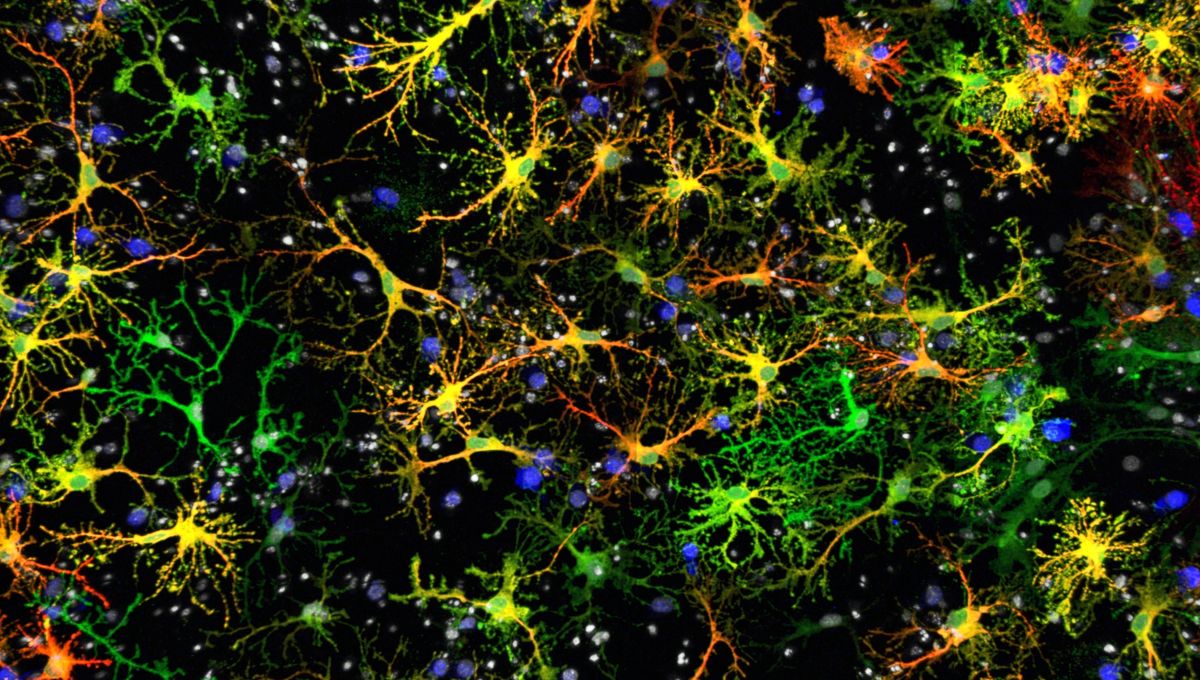
There’s a brand new brain cell in town, and it’s here to stir up the world of neuroscience. Up to now, we all thought the brain consisted of two major cell families: the neurons and the glia. Now, scientists have discovered a secret third cell type, a kind of hybrid cell that bridges the gap between these two families.
Neurons are the MVPs of the nervous system: the cells that build complex networks that transmit information within the brain and form the backbone – literally – of nerve conduction through the spine and out to the rest of the body.
Within the brain, the neurons are supported by glial cells, which come in a few different types. These form the brain’s bespoke immune system and generally help keep the environment optimal so the neurons can do their job.
One of these types of glia, the star-shaped astrocytes, are often found gathered around synapses – the junctions between neurons that nerve impulses must bridge with the help of chemical messengers called neurotransmitters.
For a long time, scientists have hypothesized that astrocytes might play a role in synaptic transmission, but experimental results have been conflicting. A new study may have found the answer, and it lies in a cell type that we didn’t even know was there.
Using precision technology that allows scientists to map the gene expression profiles of individual cells, the team identified some astrocytes that had all the machinery necessary to perform a function that is usually only found at the synaptic junctions of neurons. They seemed to be able to release glutamate, the most abundant neurotransmitter in the brain.
The evidence was first found in mouse cells, but study co-director Ludovic Telley explained in a statement that the same function appears to be preserved in humans.
“We also identified other specialized proteins in these cells, which are essential for the function of glutamatergic vesicles and their capacity to communicate rapidly with other cells,” Telley added.
So the machinery was all there, but did it work? Advanced imaging techniques allowed the team to observe the cells releasing glutamate, both in tissue samples and in living mice. Co-director Andrea Volterra explained how the glutamate was released only from specific areas of these cells, much like the synapses in neurons.
Even more strikingly, the team found that the glutamate being released by the new hybrid cells does appear to have an impact on synaptic transmission and the regulation of neuronal circuitry.
“They are cells that modulate neuronal activity, they control the level of communication and excitation of the neurons,” said first author Roberta de Ceglia. The team highlighted the role of these newly discovered cells in supporting long-term potentiation, a process that plays a key role in memory.
This last discovery opens up the possibility that the hybrid cells could be playing a role in disorders that affect memory, such as dementia, but the team also observed potential links with epilepsy and Parkinson’s disease. Now that these cells have been brought out of hiding, it raises a whole new set of questions to explore.
“In between neurons and astrocytes, we now have a new kind of cell at hand. Its discovery opens up immense research prospects,” Volterra concluded. “Our next studies will explore the potential protective role of this type of cell against memory impairment in Alzheimer’s disease, as well as its role in other regions and pathologies than those explored here.”
The study is published in Nature.
Source Link: How A New Brain Cell's Discovery Could Shake Up Neuroscience Research